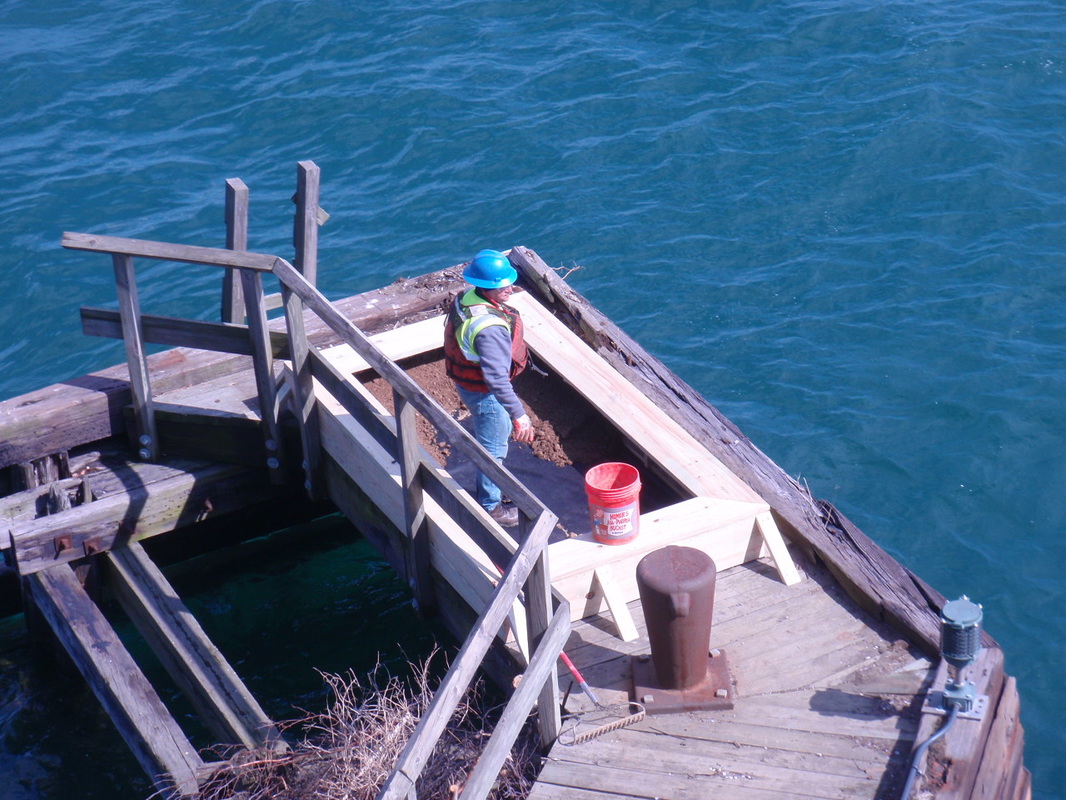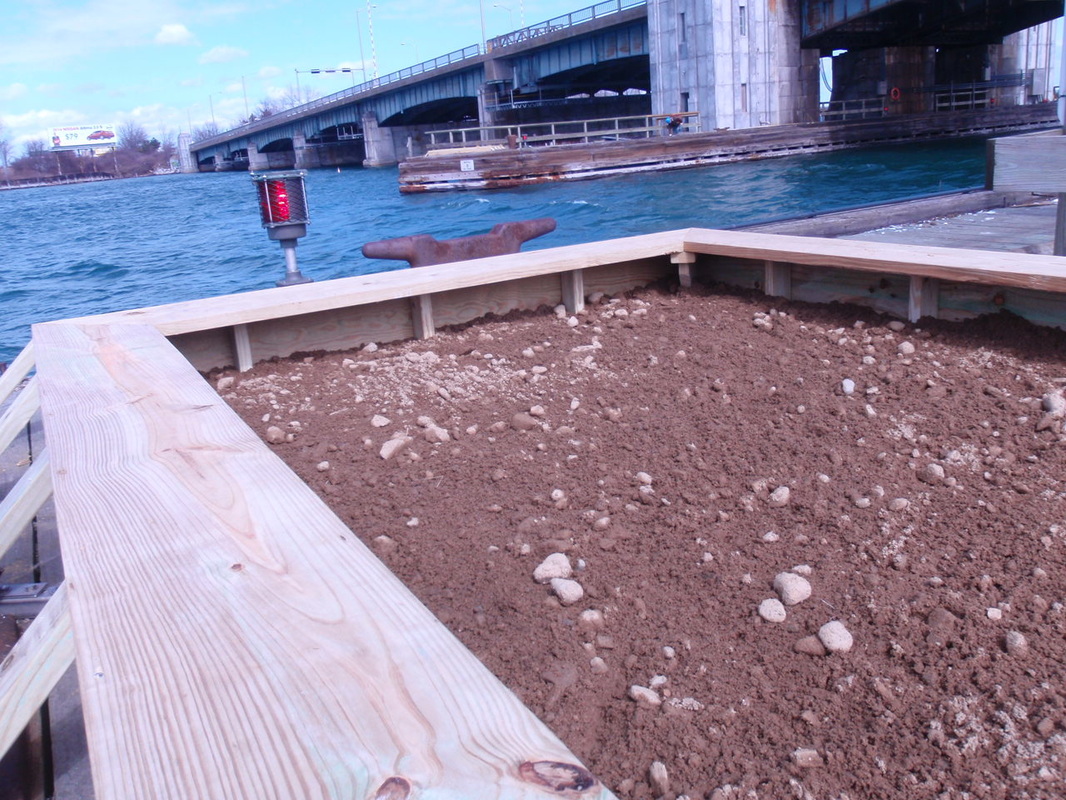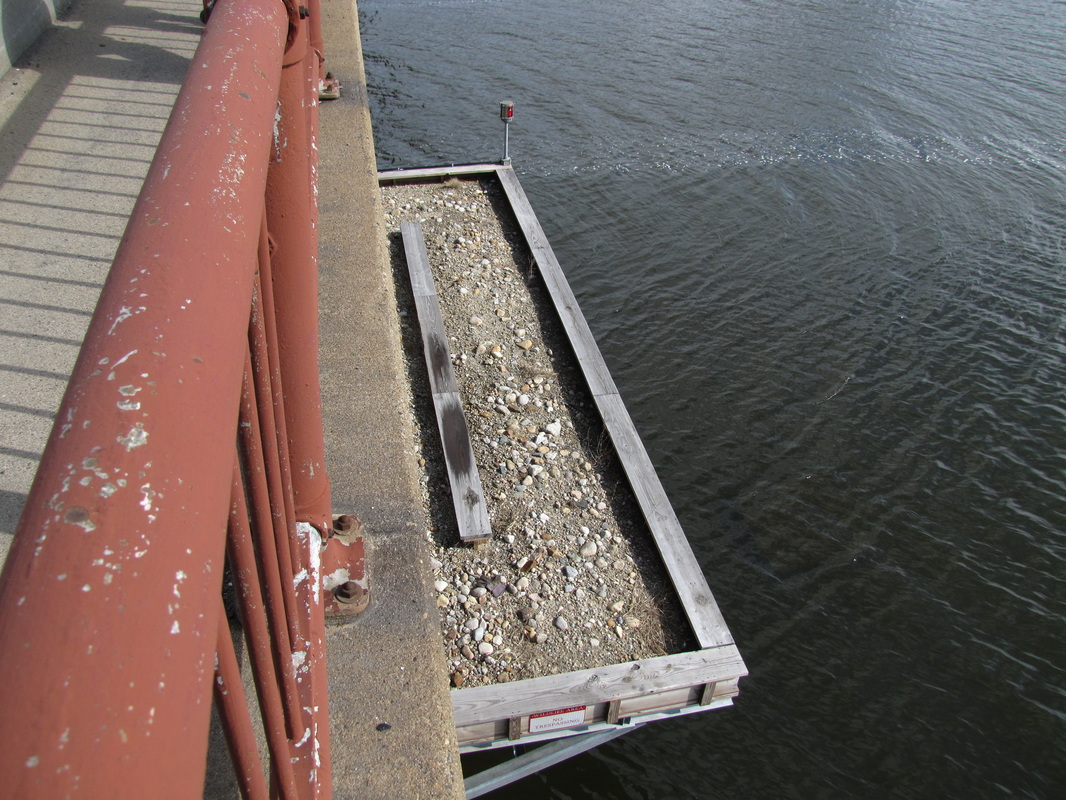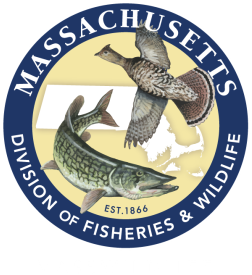Common Tern and Bridge Fenders
The Common Tern (Sterna hirundo) is a small seabird that returns in the spring from warmer locations to enliven Massachusetts beaches with its raucous cries. It is a gregarious and charismatic creature, joining its neighbors to boldly mob, peck, and defecate on intruders to drive them away from their nests, which are situated on the ground.
Probably numberings in the hundreds of thousands in the state before 1870, the common tern is considerably more scare today. Protection, management, and restoration of nesting colonies have allowed populations to gradually increase, but the common tern remains a Species of Special Concern in Massachusetts.
The common term is a gregarious, nesting in colonies of a few to thousands of pairs. Besides shorelines, pairs nesting within the Boston Harbor have taken up residence on piers and bridge fenders. During the recent rehabilitation of the General Edwards Bridge in Revere, Linking Landscapes worked closely with the local highway district and the contractor to proactively install nesting platforms on the bridge fenders to enhance nesting conditions. The project reinforces the value of calibration and partnerships.
The Common Tern (Sterna hirundo) is a small seabird that returns in the spring from warmer locations to enliven Massachusetts beaches with its raucous cries. It is a gregarious and charismatic creature, joining its neighbors to boldly mob, peck, and defecate on intruders to drive them away from their nests, which are situated on the ground.
Probably numberings in the hundreds of thousands in the state before 1870, the common tern is considerably more scare today. Protection, management, and restoration of nesting colonies have allowed populations to gradually increase, but the common tern remains a Species of Special Concern in Massachusetts.
The common term is a gregarious, nesting in colonies of a few to thousands of pairs. Besides shorelines, pairs nesting within the Boston Harbor have taken up residence on piers and bridge fenders. During the recent rehabilitation of the General Edwards Bridge in Revere, Linking Landscapes worked closely with the local highway district and the contractor to proactively install nesting platforms on the bridge fenders to enhance nesting conditions. The project reinforces the value of calibration and partnerships.




